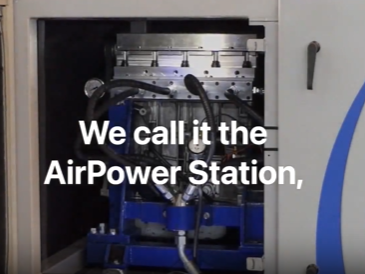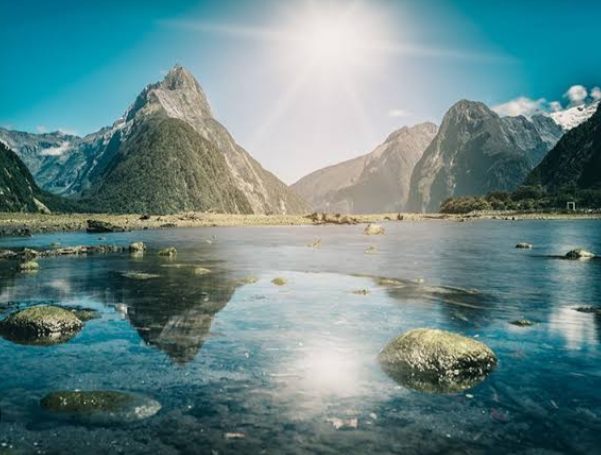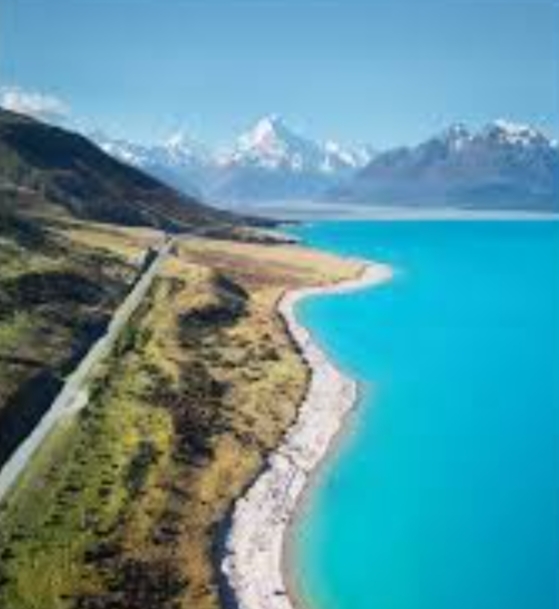⛷️ Introduction Green Travel Practices: New Zealand ⛷️
New Zealand! A stunning land of vibrant landscapes, diverse ecosystems, and a strong commitment to sustainability. It’s a prime choice for green travel, offering countless ways to experience its beauty while minimizing your environmental footprint. Here are some ideas to get you started:
Green Travel Destinations: New Zealand – Embrace Beauty, Respect the Land
New Zealand, the land of the long white cloud, beckons travelers with its dramatic landscapes, diverse ecosystems, and rich Maori culture. But beyond its stunning scenery lies a deep commitment to sustainability, making it a prime destination for green travelers. Here’s how you can experience New Zealand’s beauty while minimizing your environmental impact:
Must-Visit Green Destinations:
- Aoraki/Mount Cook National Park: Hike amidst glaciers, snow-capped peaks, and turquoise lakes. Opt for guided eco-walks or independent trails, respecting the fragile alpine environment.
- Aoraki/Mount Cook National Park:
- Home to New Zealand’s highest peak, Aoraki/Mount Cook, rising 12,218 feet above sea level.
- 43 glaciers, 19 peaks over 10,000 feet, and turquoise glacial lakes.
- Diverse hiking trails, from short walks to multi-day adventures.
- Tongariro National Park: Explore volcanic wonders like steaming craters and emerald lakes. Stay in certified sustainable lodges and join guided treks that support conservation efforts.
- Tongariro National Park:
- New Zealand’s oldest national park, established in 1887.
- Dual World Heritage Site for its natural and cultural significance.
- Active volcanic landscapes with steaming craters, emerald lakes, and lava flows.
- The Tongariro Alpine Crossing, a 19.4-kilometer (12-mile) day hike, is a popular attraction.
- Abel Tasman National Park: Kayak through golden beaches, lush forests, and crystal-clear waters. Choose solar-powered boat tours or cycle the Great Taste Trail for a scenic adventure.
- Abel Tasman National Park:
- Golden beaches, lush forests, and crystal-clear waters.
- The Abel Tasman Coast Track, a 51-kilometer (32-mile) hiking trail, is a great way to explore the park.
- Kayaking, swimming, and snorkeling are popular activities.
- Waitomo Caves: Witness the magical glowworms illuminate the caves in a breathtaking natural light show. Choose responsible operators who prioritize cave conservation.
- Waitomo Caves:
- Home to thousands of glowworms that illuminate the caves.
- Guided boat tours and black water rafting are available.
- Te Urewera National Park: Immerse yourself in ancient forests, waterfalls, and Maori culture. Stay in eco-lodges and support initiatives that protect this sacred land.
- Te Urewera National Park:
- A vast wilderness of ancient forests, waterfalls, and deep gorges.
- Steeped in Maori culture and history.
- Hiking, camping, and kayaking are popular activities.
New Zealand Beckons: Embrace Green Travel in its Stunning Landscapes
New Zealand’s breathtaking landscapes, diverse ecosystems, and rich Maori culture lure travelers from far and wide. Yet, amidst the awe-inspiring scenery, responsible tourism is key. By embracing green travel practices, you can ensure your adventure leaves a positive footprint on this treasured land.
Ditching the car is your first step. New Zealand’s extensive network of trains, buses, and ferries offers eco-friendly travel options, while dedicated cycling paths let you explore local charm on two wheels. Immerse yourself in vibrant towns by walking, soaking in the atmosphere and hidden gems along the way. For short trips, consider renting an electric car, contributing to a cleaner future.
Choose wisely where you lay your head. Over 1,500 eco-certified accommodations await, from luxurious lodges to cozy homestays. Look for solar panels, energy-efficient practices, and local food sourcing. For an immersive experience, opt for eco-friendly campsites, minimizing campfire impact and leaving no trace. Supporting local communities through homestays and locally owned accommodations not only reduces your carbon footprint but also boosts their economies.
Adventure responsibly on your journey. Choose eco-friendly tour operators committed to conservation and smaller group sizes to minimize wildlife disturbance. Hike, kayak, cycle, or witness wildlife with these conscious guides. Embrace Maori-owned experiences to connect with their deep connection to the land and traditional knowledge. Respect wildlife by observing from a safe distance, avoiding feeding, and sticking to designated trails.
- Accommodation: Choose eco-certified lodges, homestays, or campsites dedicated to sustainable practices. Look for solar panels, energy-efficient systems, and local food sourcing.
- Activities: Support eco-friendly tours and operators committed to conservation. Go hiking, kayaking, or stand-up paddleboarding while respecting wildlife and minimizing disturbance.
- Food: Enjoy fresh, local produce at farmers’ markets and support sustainable restaurants. Reduce food waste by packing reusable containers and ordering responsibly.
- Cultural Immersion: Learn about Maori culture and their deep connection to the land. Support local craftspeople and artisans, and contribute to community projects.
Navigating New Zealand Green: Eco-Friendly Transportation Options
New Zealand’s stunning landscapes, vibrant Maori culture, and commitment to sustainability beckon travelers seeking green adventures. But once you arrive, how do you explore while minimizing your environmental footprint? Transportation options abound, so let’s navigate New Zealand with eco-conscious travelers in mind.
Ditch the Wheels:
- Trains and Buses: New Zealand boasts an extensive network of InterCity buses and national rail services connecting major cities and towns. Opt for scenic train journeys on the TranzAlpine or Overlander for breathtaking views.
- Ferrying Across: Explore stunning coastlines and islands with eco-friendly ferries across Cook Strait, Hauraki Gulf, and Milford Sound. Consider electric ferries in cities like Auckland and Wellington for shorter crossings.
- Pedal Power: Many towns and cities offer dedicated cycling paths, and bike rentals are widely available. Explore urban landscapes or scenic trails at your own pace, enjoying the fresh air and local sights.
Embrace Sustainable Steps:
- Walking Wonders: Immerse yourself in local charm by exploring towns and villages on foot. Discover hidden gems, vibrant street art, and unique shops along your journey.
- Hiking Highs: New Zealand’s national parks offer breathtaking hikes accessible on foot. Leave no trace, use designated trails, and respect wildlife for a harmonious experience.
Go Beyond the Norm:
- Scenic Railjourneys: Take iconic train journeys like the Northern Explorer or Taieri Gorge Railway for picturesque landscapes and eco-friendly travel.
- Sailing Adventures: Embrace the wind and waves with eco-conscious sailing tours exploring coastlines, fjords, or the Hauraki Gulf.
Tips for Responsible Travel:
- Plan your journey: Research and book tickets for trains, buses, and ferries in advance, especially during peak season.
- Utilize travel passes: Consider multi-day rail or bus passes for cost savings and convenience if exploring multiple regions.
- Support local operators: Choose smaller, eco-conscious tour operators with responsible practices for your activities.
- Offset your carbon footprint: Consider supporting carbon offset programs to compensate for your unavoidable emissions.
By embracing these eco-friendly transportation options, you’ll navigate New Zealand’s beauty while minimizing your environmental impact. Let your journey be a testament to responsible travel, leaving a positive footprint on this green paradise. Remember, every step counts towards protecting this treasured land for future generations. So, pack your wanderlust, choose green transportation, and experience the magic of New Zealand’s diverse landscapes with an eco-conscious heart!
Green Travel Destinations, New Zealand: Hotel and Restaurant
New Zealand’s Green Oasis: Eco-Conscious Stays and Savory Bites
New Zealand’s breathtaking landscapes and vibrant Maori culture are calling, and you’re heeding the call with a green travel mindset. But where do you rest your head and satisfy your appetite while minimizing your environmental footprint? Dive into New Zealand’s world of eco-friendly hotels and restaurants, where delicious experiences await without sacrificing sustainability.
Hotels for the Eco-Warrior:
- Eco-Certified Gems: Seek out accommodations with Qualmark’s Enviro-Gold certification or the Green Globe label. These properties champion green practices like solar power, water conservation, and locally sourced food.
- Boutique Retreats: Opt for rustic charm in eco-friendly lodges nestled amidst nature. Look for options like the Wanaka Eco Lodge or the Punanga Tane Retreat for immersive experiences.
- Homestay Harmony: Immerse yourself in local life with eco-conscious homestays. Support Maori-owned options like Tamahere Retreat or Kaikoura Homestay for authentic cultural experiences.
Dining with a Conscience:
- Farm-to-Table Freshness: Indulge in the bounty of New Zealand’s farms at restaurants committed to locally sourced ingredients. Support establishments like Roots in Christchurch or Nourish in Wanaka for seasonal delights.
- Seafood Sensations: Savor the Pacific Ocean’s bounty at sustainable seafood restaurants. Choose eateries certified by the Marine Stewardship Council for ethical and delicious plates.
- Cultural Feasts: Embark on a culinary journey at Maori-owned restaurants showcasing traditional flavors and techniques. Experience hangi-cooked delicacies at Mitai Maori Village or indulge in a hangi feast at Huka Lodge.
Tips for Green Gastronomy:
- Market Magic: Explore farmers’ markets overflowing with fresh, local produce for picnic provisions or in-room creations.
- Minimize Food Waste: Order responsibly, avoiding over-ordering and asking for doggy bags if needed.
- Support sustainable practices: Look for restaurants composting food scraps and using eco-friendly packaging.
- Embrace BYOB: Bring your own beverage bottle to minimize single-use plastic waste.
With these eco-conscious choices, your New Zealand adventure extends beyond breathtaking landscapes to embrace sustainable dining and accommodations. Remember, every meal and every night’s sleep can be a step towards a healthier planet. So, explore with your appetite and your environmental conscience, savoring the unique flavors and mindful hospitality that New Zealand offers. Your green travel journey awaits!
New Zealand promises breathtaking landscapes, vibrant Maori culture, and an abundance of eco-friendly adventures. But before you pack your bags, let’s navigate the cost and facility considerations for a green trip to this magical land.
Cost:
- Seasonality: Peak season (December-February) brings higher prices for flights, accommodation, and activities. Shoulder seasons (March-May, September-November) offer pleasant weather and lower costs. Off-season (June-August) boasts the best deals but limited daylight hours and some activity closures.
- Accommodation: Eco-certified lodges and homestays range from budget-friendly to luxury. Camping offers the most affordable option, with campsites catering to tents, campervans, and caravans.
- Transportation: InterCity buses and trains connect major cities and towns, with prices varying based on distance and travel class. Cycling paths offer free exploration, while ferries and scenic train journeys can be pricier. Consider multi-day travel passes for cost savings.
- Activities: Hiking and nature walks are mostly free, while guided tours, kayaking, and wildlife watching incur additional costs. Look for package deals combining accommodation, transportation, and activities for potential savings.
Facility:
- Accessibility: New Zealand is generally well-equipped for travelers with disabilities, with many eco-friendly accommodations and activities offering accessible options. Check individual websites for specific details.
- Language: English is the official language, making communication easy. Learning basic Maori greetings shows respect for the local culture.
- Technology: Wi-Fi is widely available in towns and cities, but limited in remote areas. Mobile data coverage can also be patchy. Download maps and essential apps beforehand if needed.
- Currency: New Zealand Dollar (NZD). ATMs are readily available, and credit cards are widely accepted.
Budget Planning Tips:
- Season: Choose wisely to balance cost and desired experiences.
- Accommodation: Book in advance, especially during peak season, for better deals. Consider dorm rooms, campsites, or homestays for budget-friendly options.
- Transportation: Opt for buses, trains, or cycling where possible. Utilize travel passes and consider regional day trips to minimize long-distance travel costs.
- Activities: Free hiking and nature walks offer stunning scenery without a price tag. Look for discounts and package deals for paid activities.
- Food: Cook some meals in your accommodation to save on restaurant costs. Visit farmers’ markets for fresh, local produce.
Facility Tips:
- Research accessibility needs: Choose accommodations and activities with appropriate facilities if needed.
- Learn basic Maori phrases: A few words go a long way in showing respect for the local culture.
- Download essential apps: Offline maps, translation apps, and travel-booking apps can be helpful, especially in remote areas.
- Carry cash: Smaller towns and rural areas may have limited ATM access.
New Zealand offers a diverse range of green travel experiences for all budgets and comfort levels. By planning your trip wisely and embracing eco-friendly practices, you can have an unforgettable adventure while minimizing your environmental impact and respecting the local culture. So, pack your spirit of adventure, your sense of responsibility, and get ready to experience the magic of New Zealand’s green landscapes!
Bonus Tips:
- Purchase the New Zealand Great Walks Pass for access to stunning national park trails.
- Pack light and reusable items to minimize waste.
- Learn basic Maori greetings and phrases to show respect for the land and its people.
- Offset your carbon emissions through reputable programs.
Embrace mindful living in your daily activities. Savor seasonal produce at farmers’ markets, reducing food miles and supporting local farms. Dine at restaurants committed to sustainable practices, minimizing waste and opting for eco-friendly packaging. Order responsibly, reducing food waste, and consider vegetarian or vegan options for a lower carbon footprint. Learn basic Maori greetings to show respect for the indigenous culture and engage in cultural immersion through centers, performances, and community projects.
By weaving these green practices into your New Zealand adventure, you’ll create lasting memories while minimizing your environmental impact. Remember, every step towards responsible tourism counts. So, let’s explore this paradise with respect and leave only footprints, safeguarding its beauty for generations to come.
⛷️ Have a wonderful green adventure in New Zealand!
https://www.exaputra.com/2024/01/green-travel-destinations-new-zealand.html
Renewable Energy
Before Trump, “Contempt of Court” Used to Be a Big Deal
 Most Americans, me included, are puzzled as to how the Trump administration can openly thumb its nose to the findings of our courts. Until recently, behavior like this would have wound you up in jail.
Most Americans, me included, are puzzled as to how the Trump administration can openly thumb its nose to the findings of our courts. Until recently, behavior like this would have wound you up in jail.
Renewable Energy
How Households Saved $1,200 with VEU & Air-Con Upgrade?
Renewable Energy
Air Power
 About 20 years ago, a friend asked me if I was aware that cars could run on air. I asked, delicately, what she meant, and she explained that cars can run on compressed air.
About 20 years ago, a friend asked me if I was aware that cars could run on air. I asked, delicately, what she meant, and she explained that cars can run on compressed air.
“Ah,” I replied. “Of course they can. But where does the energy come from that compresses the air?” End of conversation.
Now, it’s back. Now there are enormous swaths of the population who know so little about middle school science that they believe we can put cars on the road, in an ocean of air, and extract energy out of that air to power our automobiles.
If you’re among these morons and want to invest with some heavy-duty fraud/charlatans, here’s your opportunity. They say that it’s “self-sustaining and needs no fuel.” If that makes sense to you, be my guest.
-
Climate Change4 months ago
Guest post: Why China is still building new coal – and when it might stop
-
Greenhouse Gases4 months ago
Guest post: Why China is still building new coal – and when it might stop
-
Climate Change2 years ago
Spanish-language misinformation on renewable energy spreads online, report shows
-

 Greenhouse Gases2 years ago
Greenhouse Gases2 years ago嘉宾来稿:满足中国增长的用电需求 光伏加储能“比新建煤电更实惠”
-
Climate Change Videos2 years ago
The toxic gas flares fuelling Nigeria’s climate change – BBC News
-

 Climate Change2 years ago
Climate Change2 years ago嘉宾来稿:满足中国增长的用电需求 光伏加储能“比新建煤电更实惠”
-

 Carbon Footprint2 years ago
Carbon Footprint2 years agoUS SEC’s Climate Disclosure Rules Spur Renewed Interest in Carbon Credits
-
Renewable Energy5 months ago
US Grid Strain, Possible Allete Sale












